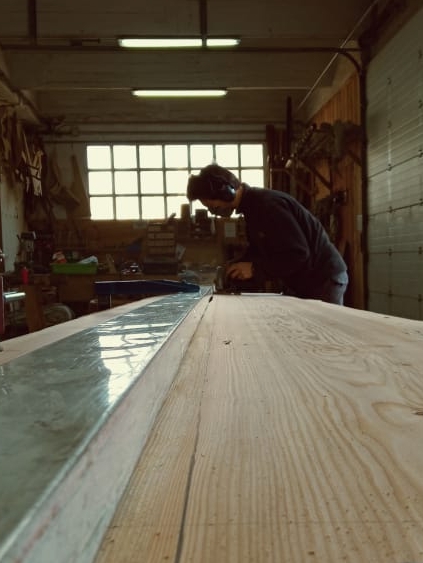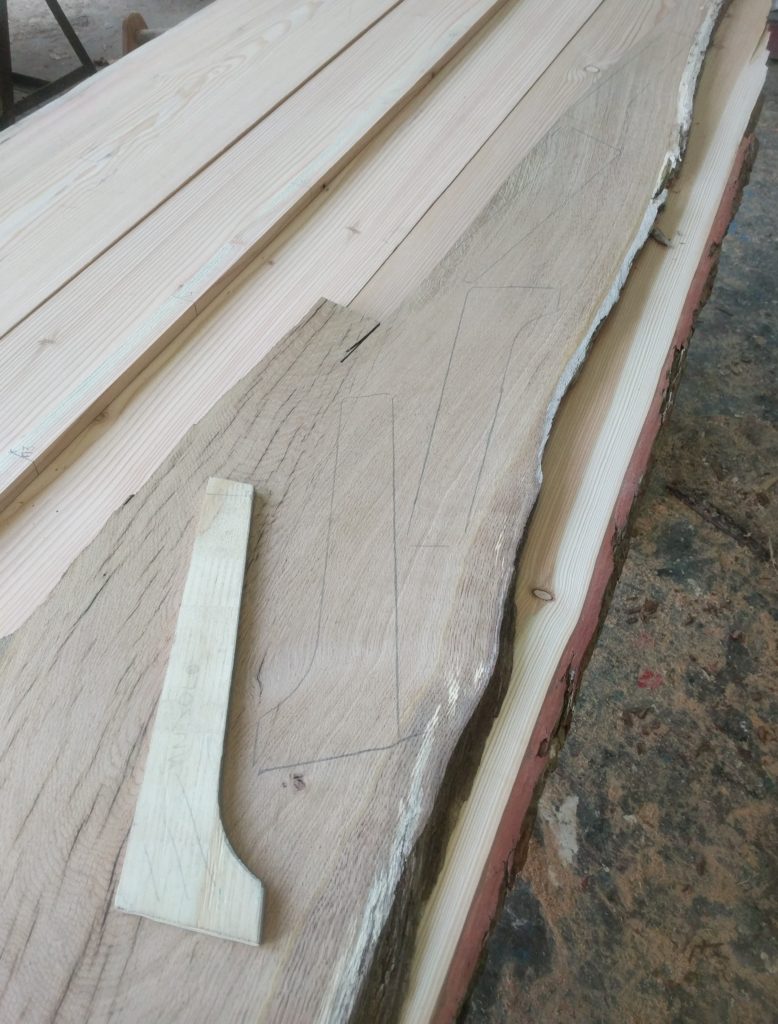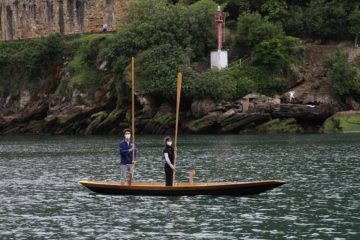Another week passed by, and still there is no space in the workshop for us. But worry not: we have been promised a space in the workshop for next monday. Until then we cannot fasten the strongback (cantier) to the floor and actually start building.
There were, however, a lot of things that we could do this week. Most important of all, milling up the wood to the dimensions of the parts we will need.

First things first: a boat would not float without a bottom. The flat bottom of our sandolo will be made out of three very wide larch planks (about 32 cm each), planed down to 1.8 cm thick.

Moving up, we needed frames. Lots of ‘em. I believe 38 in total.

Keeping in mind to leave enough material for the changing bevel of the frames, we used a pattern of the central frame (maestra) to mark the wood to cut.
Since we don’t usually work with such small boats, we tried to take advantage of leftover oak planks, planed down to just 1.8 cm.
Floor timbers where the easiest part to source. There are 18 of them, but the shortest is only about 30 cm long and the longest slightly more than a meter. They all are 4.2 cm wide and 3 cm thick. In Venice they would be in many cases made of larch, especially for such a small (and cheap) boats. We have an abundance of oak, so we’ll give her some extra strength.

We then assembled the main frame (that we’ll need next week to hang the sheer planks). The floor timber has two notches to accommodate about two thirds of each frame, in order to prevent it from moving.
Nowadays boats in Venice are mainly fastened with stainless steel screws, but we are building this s’ciopon the old way, therefore we fastened the three parts together with galvanised nails.
Ioanna also started the transom, and I tried to figure out how the stem is going to be shaped. More on that next week, when we would like to install them on the strongback.



